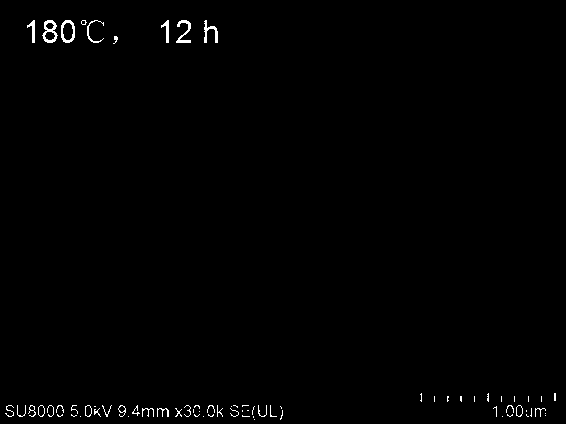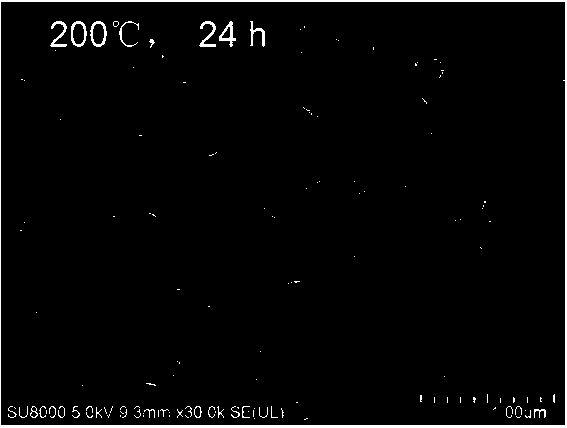One-step hydrothermal method for synthesizing nanoflake tungsten sulfide
A nano-flaky, hydrothermal synthesis technology, which is applied in the field of electrocatalytic hydrogen evolution, can solve the problems of increased energy consumption and achieve the effects of simple operation, mild conditions and high purity
- Summary
- Abstract
- Description
- Claims
- Application Information
AI Technical Summary
Problems solved by technology
Method used
Image
Examples
Embodiment 1
[0022] The preparation steps of one-step hydrothermal synthesis of nano-flaky tungsten sulfide include: dissolving 10 mmol thiourea in 20 ml deionized water, transferring the solution to a stainless steel reactor with a volume of 30 ml lined with Teflon material, taking a piece of The size is 2×3 cm 2 The cleaned metal tungsten mesh was placed in the reaction kettle and reacted at 160°C for 24 h. After the reaction was completed, it was allowed to cool naturally. The product was washed several times with deionized water and ethanol, and dried to obtain the nanosheet Tungsten sulfide material. The existence of this structure can be verified by SEM pictures.
Embodiment 2
[0024] The preparation steps of one-step hydrothermal synthesis of nano-flaky tungsten sulfide include: dissolving 5 mmol thiourea in 25 ml deionized water, transferring the solution to a stainless steel reactor with a volume of 30 ml lined with polytetrafluoro material, taking a piece of The size is 2×3 cm 2 The cleaned metal tungsten mesh was placed in the reaction kettle and reacted at 180°C for 12 h. After the reaction, it was allowed to cool naturally. The product was washed several times with deionized water and ethanol, and dried to obtain the nanosheet Tungsten sulfide material. The existence of this structure can be verified by SEM pictures.
Embodiment 3
[0026] The preparation steps of one-step hydrothermal synthesis of nano-flaky tungsten sulfide include: dissolving 5 mmol thiourea in 25 ml deionized water, transferring the solution to a stainless steel reactor with a volume of 30 ml lined with polytetrafluoro material, taking a piece of The size is 2×3 cm 2 The cleaned metal tungsten mesh was placed in the reaction kettle and reacted at 200°C for 24 h. After the reaction was completed, it was allowed to cool naturally. The product was washed several times with deionized water and ethanol, and dried to obtain the nanosheet Tungsten sulfide material. The existence of this structure can be verified by SEM pictures.
[0027] The material obtained by the invention is applied to electrocatalyze hydrogen evolution. The three-electrode test system of the prepared tungsten sulfide nanosheets applied to electrocatalytic hydrogen evolution was carried out at normal temperature and pressure, in which the electrolyte was 0.5 mol / L sulf...
PUM
 Login to View More
Login to View More Abstract
Description
Claims
Application Information
 Login to View More
Login to View More - R&D
- Intellectual Property
- Life Sciences
- Materials
- Tech Scout
- Unparalleled Data Quality
- Higher Quality Content
- 60% Fewer Hallucinations
Browse by: Latest US Patents, China's latest patents, Technical Efficacy Thesaurus, Application Domain, Technology Topic, Popular Technical Reports.
© 2025 PatSnap. All rights reserved.Legal|Privacy policy|Modern Slavery Act Transparency Statement|Sitemap|About US| Contact US: help@patsnap.com



